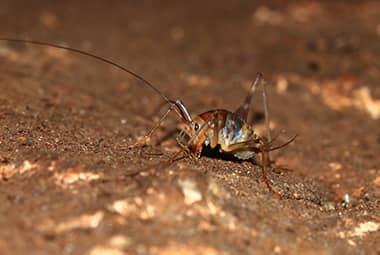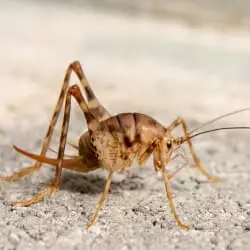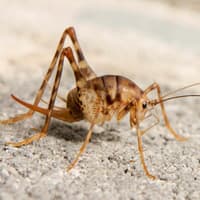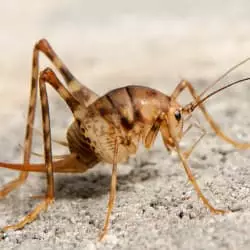Camel crickets get their common name from their appearance, as they are humpbacked like camels. They may also be known as cave crickets or spider crickets. They are often found in caves, and in damp, cool areas under leaves, stones, and logs that are rotting. Camel crickets exist in large numbers across the Tennessee and the rest of the United States. Their lifespan is between one and two years.
Identifying Camel Crickets
Camel crickets do not produce sound, as they don’t have any organs which allow them to do so. They do not have wings, instead, they use their large back legs and long antennae to help them get around in the dark spaces where they gather. When frightened, camel crickets tend to leap. This is their defense mechanism, and basically the only way they can scare off predators.
Camel crickets are light to dark brown in color, and may have spots with lighter or darker areas. Adult camel crickets can grow to between thirteen and thirty-three millimeters in length.
Problems Camel Crickets Cause
Camel crickets really do not pose any health threats to humans. They don’t have fangs and cannot bite, are not poisonous, and are not known to carry any diseases.
Camel crickets can become a nuisance, though, if they get into your home. Some species may damage clothing and other fabrics, like curtains. Their diet consists of wood, carpet, fungi, cardboard, other insects, and even other camel crickets at times. They can create a lot of damage as their numbers grow, and that is the last thing you want to happen in your home!
How to Prevent Camel Crickets
Preventing a camel cricket infestation takes work. Though these pests are not dangerous to your health and won’t hurt you, they can be a real nuisance.
Here are a few things you can do to help keep them out of your home and off your property:
- Reduce areas of moisture in and around your home. You may choose to use a dehumidifier to prevent moisture build-up inside.
- Seal points of entry around your home, such as gaps under and around doors and windows, cracks in your foundation, and tears or rips in window screens.
- Ventilate crawl spaces, basements, and attics.
- Firewood should be stored no less than twenty feet away from your house.
- Remove debris from your yard.
- Outdoor garbage cans should be moved away from the exterior walls of your home.
- Tall grasses on your property should be mowed to a manageable length.
Getting Rid of Camel Crickets
If you believe you have a camel cricket infestation in your home, contact a licensed pest control professional right away. The professionals at Russell’s Pest Control will conduct an inspection of both the interior and exterior of your home. We will work with you to develop a treatment plan to rid your home of camel crickets. Give us a call to learn more.



